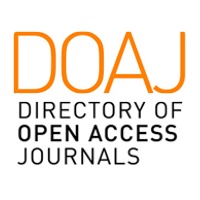THE LEVEL OF WEED INFESTATION AND YIELD CAPACITY OF MAIZE SOWING UNDER THE APPLICATION OF HERBICIDE TROPHY 90
Keywords:
maize, Trophy 90, weed infestation, yield capacityAbstract
The problem of weed control arose several thousands years ago together with the rise of arable farming. With the development of farming techniques the methods of exterminating weeds, which were competing with crops, have been constantly developing. However, the weed adaptability to growing in crop biocoenoses is so perfect that the problem has not been solved till present.Weeds do harm to agriculture. Competing with field crops for light, water and nutrients, weeds reduce crop yields by 40–60%. According to FAO data, the average world losses of yield caused by weeds comprise: winter wheat – 24%, maize – 29%, rice – 34%, soya – 35%, sugar beets – 37% of the potentail yield levels.The species structure of weeds can be most clearly seen in the areas under maize as it is less competitive in terms of biocoenosis. What is more, weeds phytocenosis acquires specific resistence ability due to anthropogenic micro-evolutional selection, therefore, in this connection, a constant need for the improvement of phytotoxic effect of herbicides appears. Field experiments with the application of herbicides in maize crops indicate that the death of weeds in their actions ranged from 68 to 98%, grain yield increased by 1,5–1,8 t/ha, and the yield of green mass – at 1,95–2,00 y/ha.In connection with all the mentioned above one of the tasks of the research was to establish the efficiency of different rates of application of herbicide Trofi 90 in exterminating segetal plants in the areas under maize grown for its grains, the impact of these rates on quantitative-weight and species level of weed infestation.In the process of studying the effect of different rates of the herbicide on the level of weed infestation of areas under maize it was established that it dicreased sumalteniously with the increase of rates of the preparation application and this dependence stayed the same during the years of the research. In the experiment variant with hand weeding the maize fields were kept free of weeds during all years of the research. While determining the level of weed infestation in 2011 it was found out that the quantity and mass of weeds in the maize fields depended on the application rate of the preparation and decreased with higher herbicide rates. Thus, a month later after the appication of Trofi 90 at the rates of 1,5; 2,5 і 3,5 l/ha the number of weeds decreased in comparison with the control variant I correspondingly by 97, 110 і 114 pcs./m2 (the share of extermination comprised 83, 94 і 97% respectively), which is important under НІР05 3 pcs./m2. The weed mass in these experiment variants decreased correspondingly by 145, 212 і 236 g/m2 with НІР05 25 g/m2. In other years of studies was observed similar relationship between the rates of herbicide and a level of weed infestation.While determinig the species composition of weeds in the maize fields it was established that in the experimental field a mixed type of weed infestation was formed with the domination of diachenous and dioecious species such as Amaranthus retroflexus L., Chenopodium album L., Sonchus oleraceum L., Sonchus arvense L., Polygonum scabrum L. and monocotyledonous species: Setaria viridis L. and Setaria glauca L., Echinochloa crus-galli L. These weeds belong to native (autochthon) flora.Counting the weeds a month later after the herbicide application showed that in hand weeding variant the fields remained free of weeds and in the variants with the application of different herbicide rates some weeds were still found.Thus, for example, under the effect of Trofi 90 at the rate of 1,5 l/ha the plants of Setaria viridis L. were exterminated 88%, Amaranthus retroflexus L., – 69%, Chenopodium album L., – 76%, Sonchus oleraceum L., – 100%, Sonchus arvense L., – 69%, Polygonum scabrum L.– 76%, Echinochloa crus-galli L. – 86% and other weeds – 57%. Under the application of 2,5 l/ha of the herbicide the extermination of the mentioned weed species comprised correspondingly 92, 81, 83, 100, 100, 100, 100 і 96%. The highest index of weed infestation decrease was noticed under the effect of 3,5 l/ha of the herbicide: 97% – Setaria viridis L., 86% – Amaranthus retroflexus L. Other weeds in this experiment variant were absent.Analysis of maize grain yield in years of research showed that through more favorable weather conditions during the growing season crops, larger yield capacity of maize was obtained in 2011 – 6.10 t/ha to 5.11 t/ha in 2012 and 5.85 t/ha – in 2013. This was possible due to more rainfall during the intensive growth of corn and less hot air temperature. In individual years, noted that the largest increase of grain yield was formed on the same versions of the experiment, which were more favorable for the growth and development of corn plants while eliminating the vast number and mass of weeds.On average over the three years the greatest increase productivity among all variants of the experiment was obtained at constant hand weeding – 1,70 t/ha, under the action of 1,5 l/ha yield increase of 90 Trophy was 0.69 t/ha, whereas in the applications 2,5 l/ha of preparation – 1,58 t/ha. The smallest increase of harvest, as well as in years of research, was obtained with 3,5 l/ha of herbicide – 0,40 t/ha.On the basis of these studies and the results obtained revealed that the hand weeding and application of herbicide Trofi 90 makes it possible to control the level of weed infestation in the maize fields. The level of weed extermination depends on the rates of the herbicide application, and with the increase of herbicide rates the quantity and mass of weeds decrease. The highest index of extermination of weed component, without taking into consideration hand weeding, was observed under the application of the herbicide at the rate of 3,5 l/ha. Reducing the level of weed infestation of maize sowing improves to its yield. The highest yield gain obtained by hand weeding and under the application Trophy 90 – by 1,70 and 1,58 t/ha more than the control I.
References
Мордерер Є. Ю. Сучасний стан, проблеми та перспективи подальшого розвитку хімічного методу боротьби з бур'янами / Є. Ю. Мордерер // Физиология и биохимия культурных растений. – 2008. – Т.40. – №6. – С. 492–502.
Прищепо М. М. Бур’яни у насінниках. Регулювання чисельності у посівах суданської трави / М. М. Прищепо, А. М. Влащук // Карантин і захист рослин. – 2006. – № 4. – С. 15–16.
Николаева Н. Г. Вредность сорняков / Н. Г. Николаева, С. С. Ладан // Земледелие. – 1998. – №1. – С. 20–22.
Зуза В.С. Засміченість орних земель / В. С. Зуза // Захист рослин. – 2002. – № 6. – С. 8–9.
Калієвський М. В. Забуряненість посівів ярих культур після стерньових попередників за основного зяблевого обробітку чорнозему опідзоленого різної інтенсивності // М. В. Калієвський, П. І. Пясецький // Матеріали Всеукраїнської наукової конференції молодих учених. – Умань, 2011. – С. 46–49.
Єщенко О. В. Урожайність насіння буряків цукрових при застосуванні гербіцидів на насінниках // О. В. Єщенко, А. І. Любченко, Н. Б. Єщенко / Зб. наук. пр. Уманського НУС. - 2011. – Вип. 75. – С. 62–68.
Іващенко О. О. Бур'яни на посівах – проблема масштабна / О. О. Іващенко // Захист і карантин рослин. – 2009. – №9. – С. 2–4.
Циков В. С. Бур’яни: шкодочинність і система захисту / В. С. Циков, Л. П. Матюха. – Дніпропетровськ: ТОВ Енем, 2006. – 86 с.
Спиридонов Ю. Л. Снизить засоренность полей / Ю. Л. Спиридонов, М. С. Раскин // Защита и карантин растений. – 1998. – № 2. – С. 20.
Тихонов Н. И. Гранстар в посевах пивоваренного ячменя / Н. И. Тихонов // Защита и карантин растений. – 2007. – № 10. – С. 27.
Зуза В. С. Гербіциди на посівах гороху / В. С. Зуза // Карантин і захист рослин. – 2006. – № 5. – С. 10–12.
Притуляк Р. М. Урожайність озимого тритикале залежно від внесення різних норм гербіцидів Пріми та Пуми Супер окремо і в сумішах з біостимулятором росту Біоланом // Матеріали Всеукраїнської наукової конференції молодих вчених. – Умань, 2008. – Ч. 1. – С. 59–61.
Господаренко Г. М. Особливості удобрення ярого ячменю з підсівом конюшини / Г. М. Господаренко // Ефективність хімічних засобів у підвищенні продуктивності сільськогосподарських культур / Зб. наук. пр. Уманського ДАУ, 2001. – С. 47–56.
Єщенко В. О. Основи наукових досліджень в агрономії / [В. О. Єщенко, П. Г. Копитко, В. П. Опришко, П. В. Костогриз]; під ред. В. О. Єщенка. –К.: Дія. – 2005. – 288 с.








